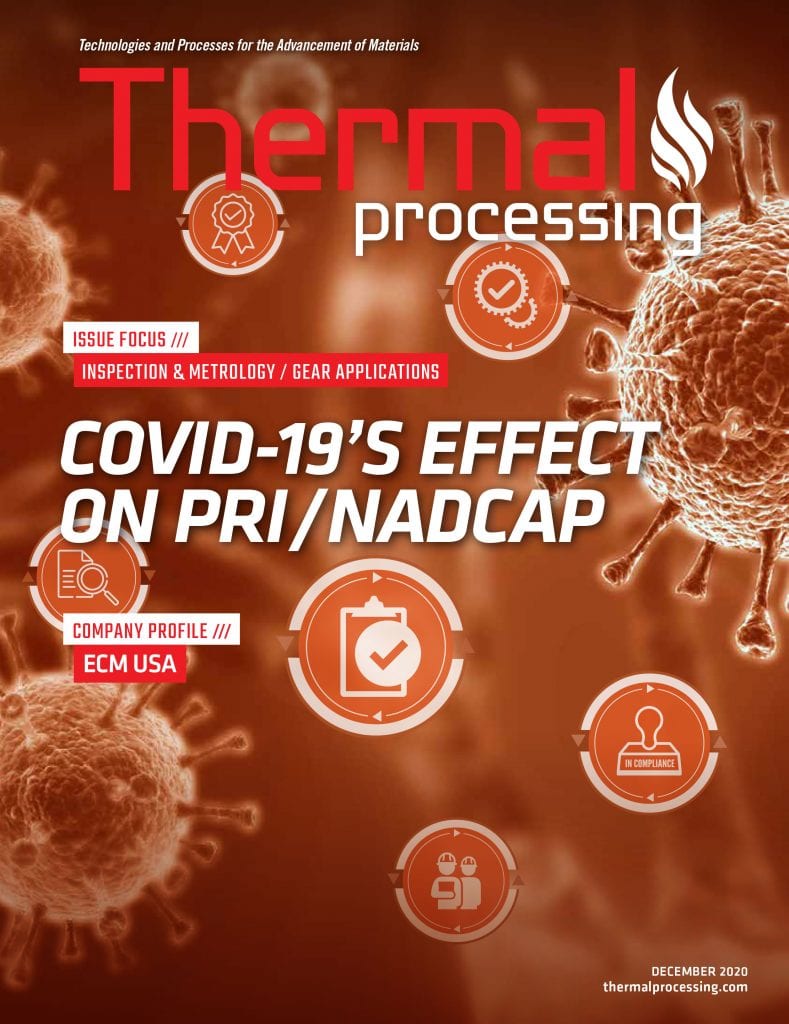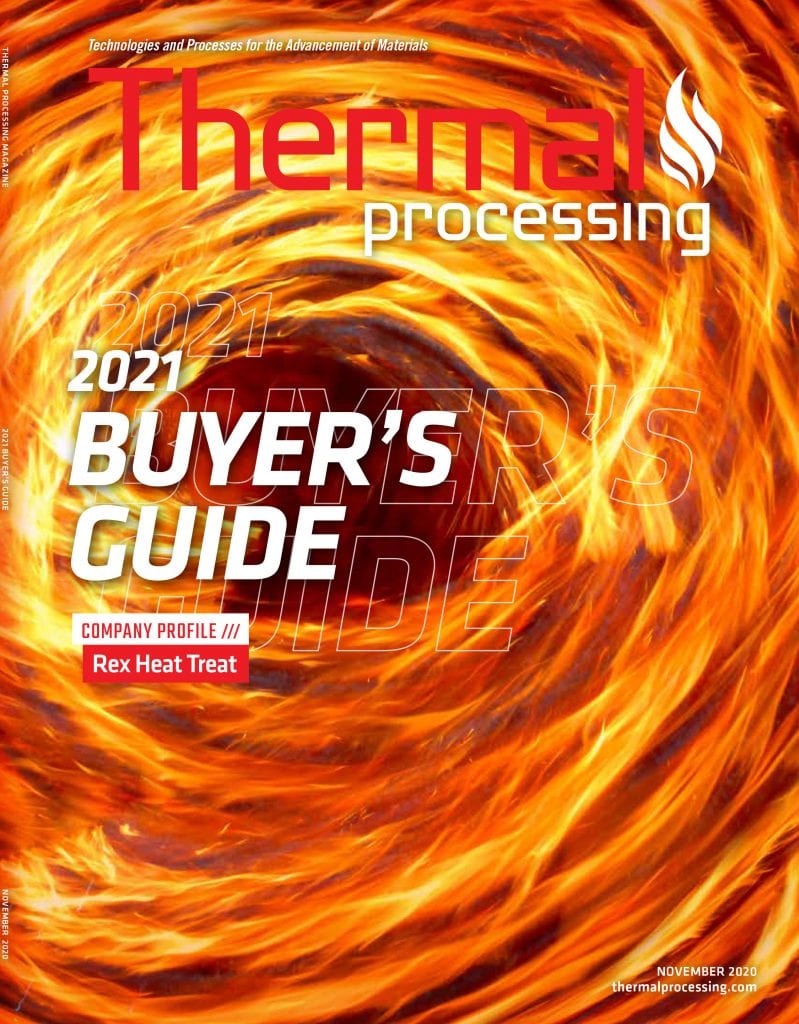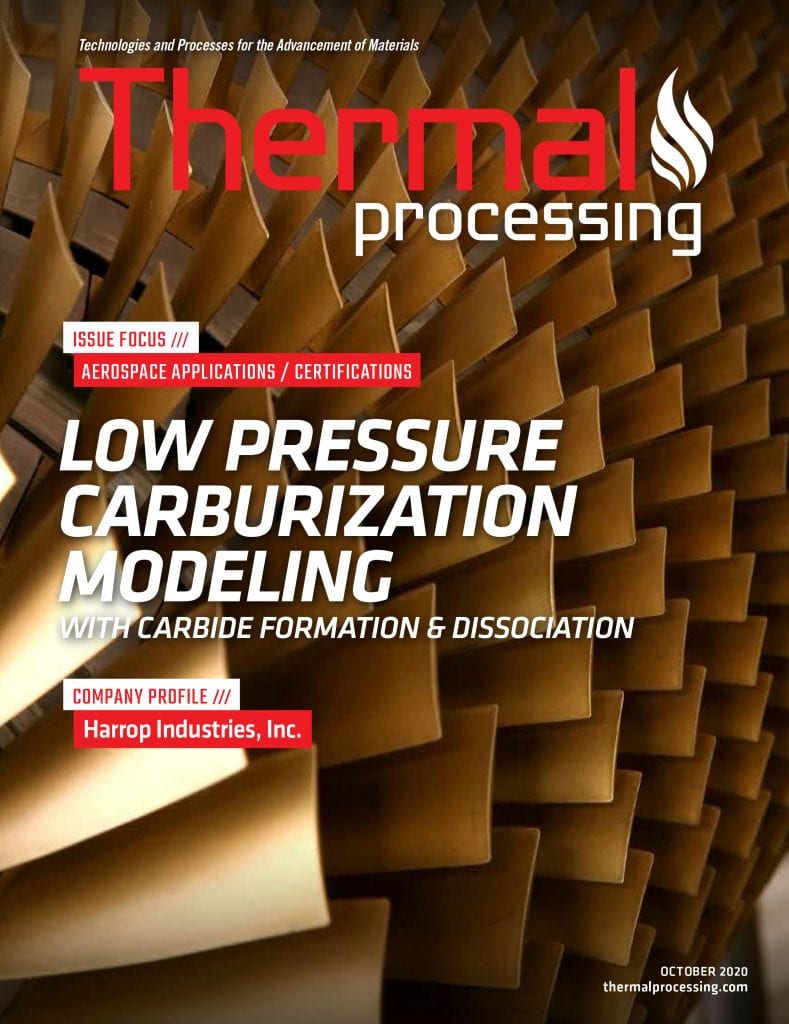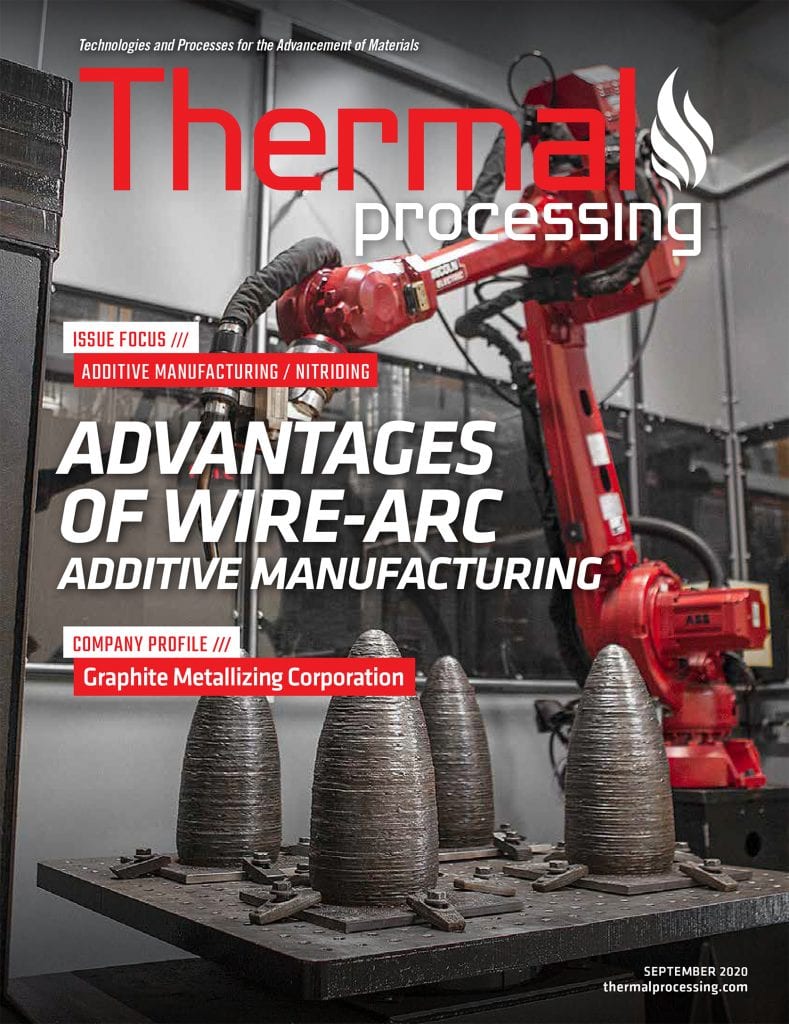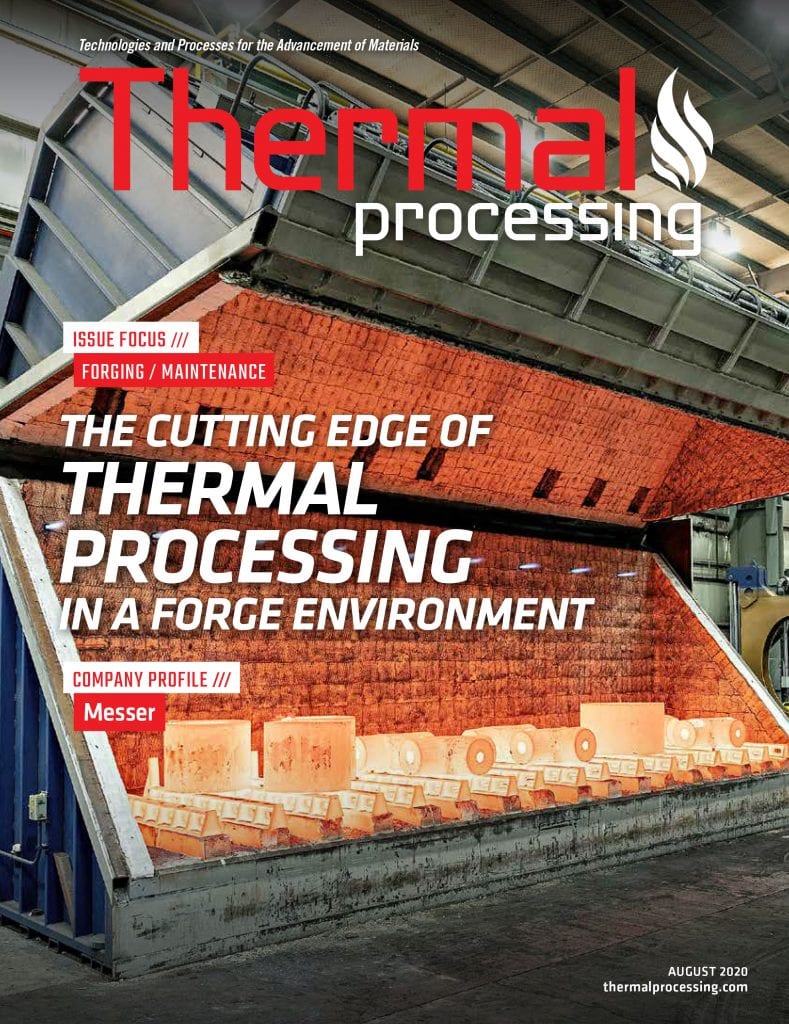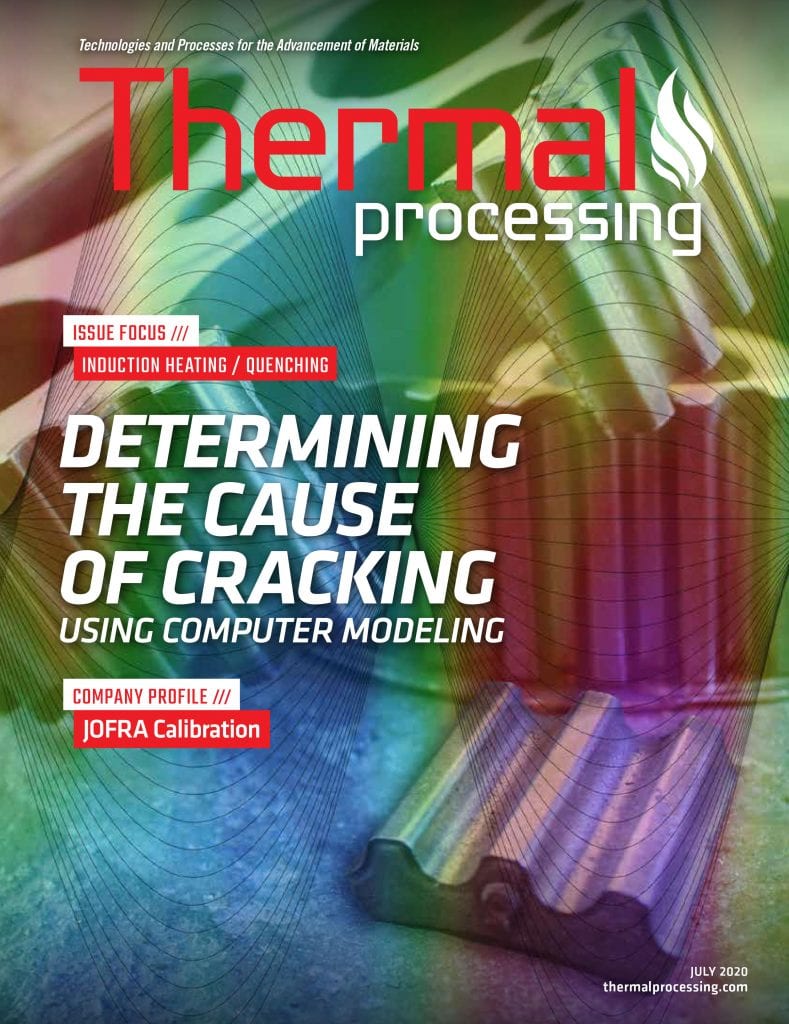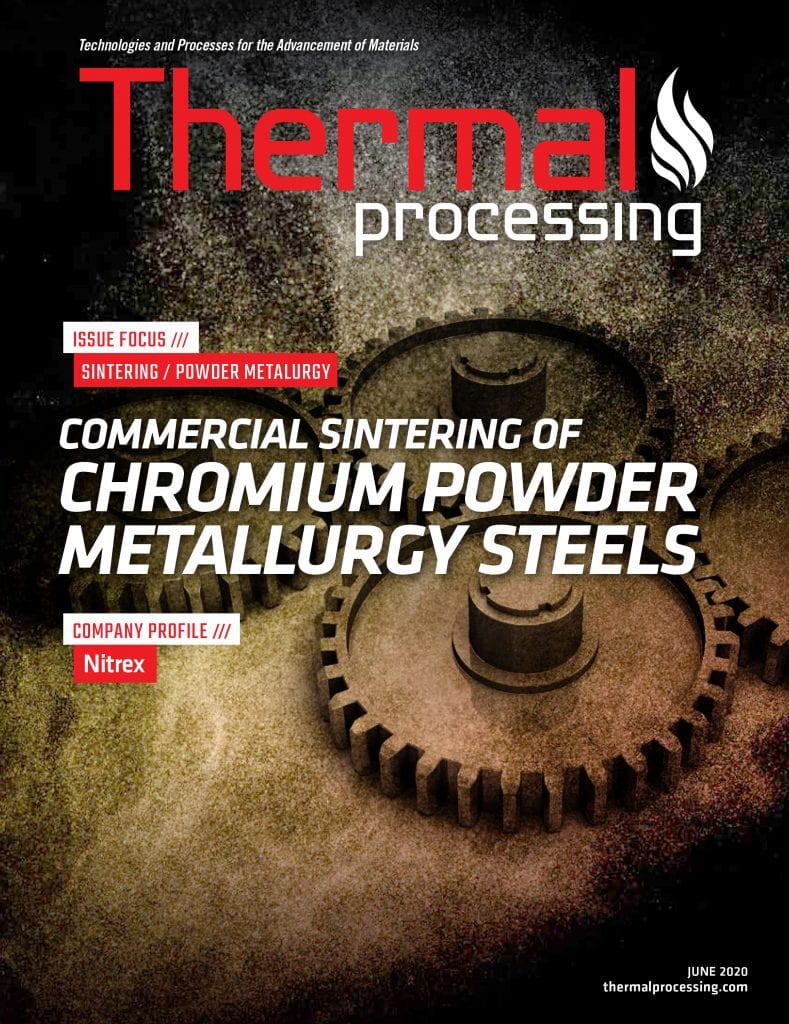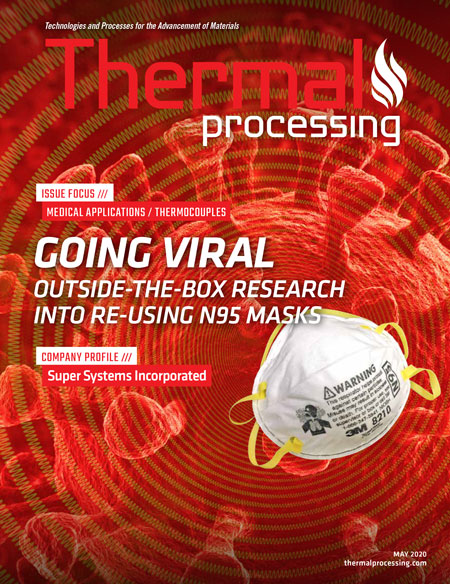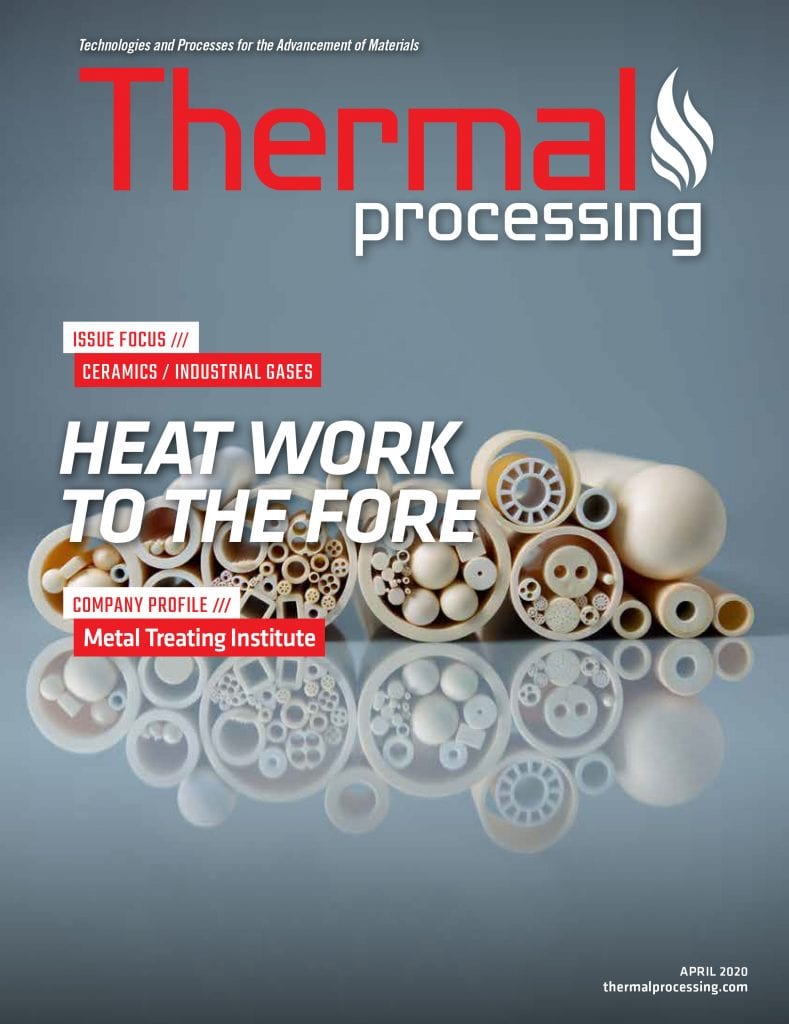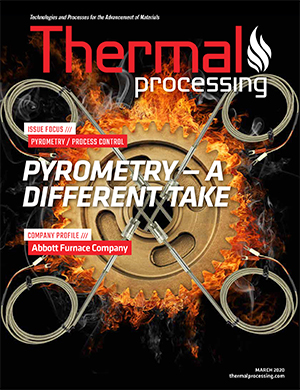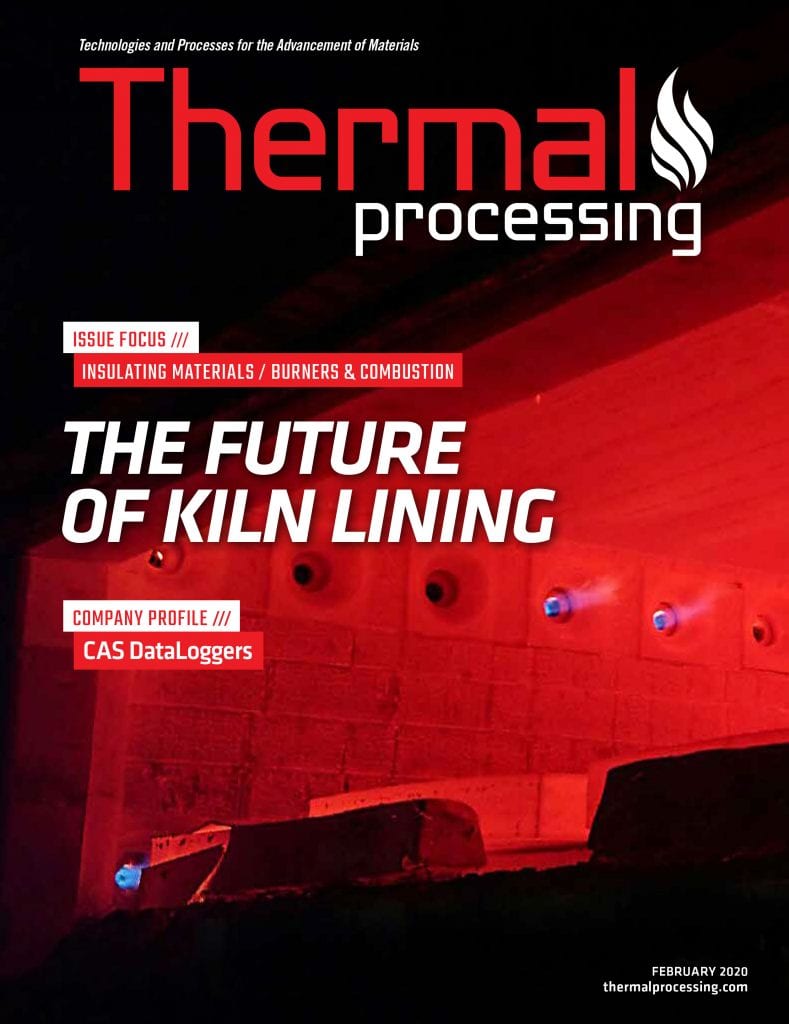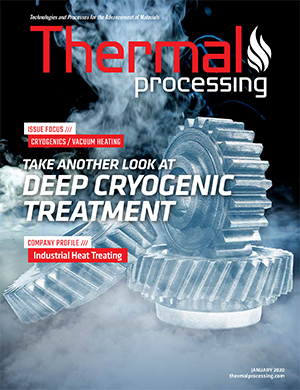Archives
December 2020
COVID-19’s effect on PRI / Nadcap
At this point in 2020, we have all felt the effects of the COVID-19 pandemic both personally and professionally. As of the writing of this article, there have been nearly 10 million cases with more than 220,000 deaths in the U.S. alone [1], and, according to the CDC, cases in the U.S. are rising. For […]
Performance and Properties of a new Alternative Gear Steel
In the ongoing strive for light weighting or power densification, high-performance clean steels are showing a significant improvement. As a next step, gear steels that combine several properties, are now proving an interesting alternative. Traditional gear steels achieve their maximum hardness after carburizing and a fast quench. A fast quench usually results in distortion as […]
Maintaining uniform target temperature
There are various processes where temperatures and other operating parameters in the oven must be controlled accurately in real-time with minimal delays. Taking a metal curing process as a viable example, we must acknowledge that the production of adhesives or various polymers materials and their bonding to the metal surface is a highly temperature-sensitive process. […]
November 2020
Rex Heat Treat
Rex Heat Treat has been involved in projects that have plumbed the depths of the Gulf and explored the landscapes of Mars, and yet, the company is still considered one of the best-kept secrets of the heat-treating industry. However, a quick look at what Rex Heat Treat offers reveals the wide range of the company’s […]
October 2020
Case study: Insights on a Nadcap accreditation
How did you first hear about Nadcap, and why did your company decide to pursue Nadcap accreditation in the first place? Braddock Metallurgical was partnered with many aerospace suppliers. As Nadcap accreditation became more widespread, we were approached by our customers in 2004 to participate in the program and attain a Nadcap heat-treat accreditation. Braddock […]
Ceramic fiber module lining installation on a curved vessel wall
Ceramic fiber modules have been implemented in thermal oxidizer units (TOU) and vessels for more than 50 years, and they have become ubiquitous as the only choice for insulation in TOUs. A thermal oxidizer unit is a degasser unit that destroys volatile organic compounds (VOCs) through thermal combustion. The precise reaction yields the biproducts of […]
Bringing forging equipment online to meet expanding production requirements
When forging operations need to expand production to meet increased demand for existing parts or to add new product lines, selecting from the available options to bring new equipment online can be challenging. Ultimately, the decision involves striking a delicate balance between fitting within budget constraints and accepting what can often be very long lead […]
September 2020
Advantages of wire-arc additive manufacturing
The concept of additive manufacturing has been around for a century, but with the advent of sophisticated software and robotics, the process is fast becoming a game changer in the manufacturing world. 3D printing — a term often used interchangeably with additive manufacturing — has been used successfully to manufacture small components, but when it […]
Does nitriding improve the corrosion and wear properties of additive manufactured stainless steel?
Many industrial processes require a stable heat source to generate end-products. Heat transfer fluids (HTFs) are commonly used in such processes as heat carriers and a number of options are available to producers, such as steam and mineral-based fluids like Globaltherm M. Historically, steam had been used as a HTF in the 1900s as the […]
A study of temperature effect on properties of nitride layers on X37CrMoV51 tool steel used in the extrusion aluminum industry
The paper concerns the effect of annealing time and temperature on the properties of the nitride layer on X37CrMoV51 tool steel used in the extrusion aluminum industry. Samples made from X37CrMoV51 steel were hardened and tempered, and then nitrided at 530°C. After nitriding, the samples were annealed in a furnace at 470°C for 8 hours, […]
August 2020
The cutting edge of thermal processing in a forge environment
Scot Forge is a 128-year-old, 100-percent employee-owned forging company that works in multiple markets from large defense, aerospace, power generation and mining projects to small machine shop and single bar orders. Over the years, our owners have made substantial investments in thermal processing equipment with nine custom-designed quenchant systems that work in tandem with more […]
A review of lubricant removal systems and the latest technology
Whether a component is produced through binder-jet additive manufacturing, metal injection molding, or conventional press and sintering, lubricant removal continues to be one of the most common issues in sintering. As with all technologies, new forming techniques have resulted in the development of new lubricants. The result is the need for even more understanding and […]
July 2020
Case study: Determining the cause of cracking using computer modeling
During an induction-hardening process, the part surface is heated using a medium- to high-frequency inductor. Once the desired depth of austenitization is reached, the part surface is quenched to transform the austenite to martensite. Compared to traditional furnace heating and liquid quenching, the induction process is much more energy efficient due to the rapid heating […]
4D high-pressure gas quenching
Thermal processing and quenching of steels for hardening is a well-established practice performed by various techniques over the centuries. A common thread has been the unpredictable nature of the size change during the quenching process, which is known as dimensional change or distortion. Material distortion is the undesired trade-off between the development of proper mechanical […]
Heat Treatments and Critical Quenching Rates in Additively Manufactured Al–Si–Mg Alloys
Laser powder-bed fusion (LPBF) has significantly gained in importance and has become one of the major fabrication techniques within metal additive manufacturing. The fast cooling rates achieved in LPBF due to a relatively small melt pool on a much larger component or substrate, acting as heat sink, result in fine-grained microstructures and high oversaturation of […]
June 2020
Commercial sintering of chromium powder metallurgy (PM) steels
Chromium was introduced as a potential alloying element for powder metallurgy (PM) steels in the 1990s. Since then, numerous chromium-containing alloy systems have been introduced and standardized in the North American market. While applications have been successful in using the benefits of these materials, the overall growth has been limited due to perceived concerns relating […]
Laser sintering of thermoset polyimide composites
Selective laser sintering (SLS) is an additive manufacturing technique that builds 3D models layer-by-layer using a laser to selectively melt cross sections in powdered polymeric materials, following sequential slices of the CAD model. SLS generally uses thermoplastic polymeric powders, such as polyimides (i.e. nylon), and the resultant 3D objects are often weaker in their strength […]
May 2020
Going viral: Outside-the-box research into sterilizing N95 masks for re-use
With the COVID-19 pandemic still raging across the country and the world, the need for personal protective equipment for medical professionals has pushed the production and distribution of this literal life-saving necessity to their limits. Given the ongoing challenge of demand exceeding production, Thermal Product Solutions (TPS) has been working with health professionals to use […]
Temperature sensor selection: The basics of temperature measurement using thermocouples
You are probably somewhat familiar with the thermocouple, or you wouldn’t be reading this article. But there are important points about thermocouples that must be understood and that will help you to make an informed selection between sensor types and avoid potential problems in your application. First, we need to clear up a common misconception […]
April 2020
Heat work to the fore
Sporting its new tagline — Enabling a Clean, Efficient & Electrified Future — the highly regarded Ceramics Expo will once again head for Cleveland’s I-X Center (September 22–23) for its sixth annual technology showcase. The organizer, Smarter Shows (Tarsus) Ltd., has confirmed that this is a virtually sold-out event, and it’s now expected that more […]
Spectroscopic study of plasma nitrocarburizing processes with an industrial-scale carbon active screen
The active screen plasma nitrocarburizing technology is an improvement of conventional plasma nitrocarburizing by providing a homogeneous temperature distribution within the workload and reducing soot formation. In this study, an industrial-scale active screen (AS) made of carbon-fiber-reinforced carbon serves as the cathode as well as the carbon source for the plasma-chemical processes taking place. The […]
March 2020
Pyrometry – A Different Take
Any article on pyrometry, as it applies to AMS2750 and thermal processing, usually gets a lot of attention. Typically filled with interpretation, clarification, and general discussion, it is understandable that pyrometry can be difficult to interpret at times, especially for someone new to the topic. Using my own experience in the industry, I have written […]
Process control, monitoring, and quality assurance specifics for induction heating
Controlling the induction-hardening process is a demanding application compared to most other thermal processes. The first and foremost requirement is to precisely control the energy delivered to the part in a reliable and repeatable manner and to deliver that energy to a precise location within the part to assure that the heat-treat pattern is per […]
Temperature uniformity survey ( TUS ) general practice for CQI-9 and AMS2750E
In the automotive and aerospace manufacturing industry, CQI-9 and AMS2750 specifications are established as guidelines to: “address pyrometric requirements for thermal processing equipment used for heat treatment. The document covers temperature sensors, instrumentation, thermal processing equipment, system accuracy tests, and temperature uniformity surveys. These are necessary to ensure that parts or raw materials are heat […]
February 2020
The Future of Kiln Lining
Lining iron and steel furnaces is critical to extend the life of the furnaces and to protect the purity of the metals being heat treated. Therefore, choosing the best material to meet these needs is critical. For many years, the primary material choice for the industry has been refractory ceramic fiber (RCF), which can withstand […]
Embracing industry change
Most companies, regardless of the industry or business, want to see improvement. Whether it is improving customer satisfaction or quality or bottom-line profit or reputation in the community, the common denominator is the same. In order to achieve this common goal, something or perhaps many things have to change. However, as soon as the realization […]
January 2020
Take Another Look at Deep Cryogenic Treatment
What is happening in the world of Deep Cryogenic Treatment (DCT)? Research into this field is exploding. Research is coming from companies and major universities in China, India, Hungary, Turkey, Pakistan, Poland, Iran, Italy, the United Arab Republic, Korea, and others. The research is covering many facets of DCT. There are three major research topics […]
Vacuum heat treatment for additive manufacturing
Additive manufacturing means any technology capable of obtaining a final component starting from a 3D CAD file and adding material layer by layer. At a theoretical level, additive manufacturing only coincides with the 3D-part construction phase. In reality, in order to fully understand this technology, a series of other preprinting and postprinting activities must be […]










